Planting trees and building community in Oak Cliff
Trees and urban forests provide a myriad of benefits to the neighborhoods where they are located, including shade to combat the urban heat island effect that increases health risks to people during extremely hot weather. Furthermore, a growing body of research shows that students benefit from close proximity to green space around the schools.
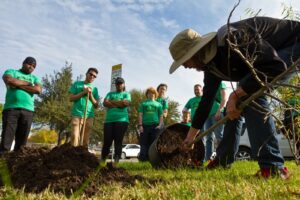 Unfortunately, parks, trees, and green space are in short supply in Dallas—particularly around schools. Research from The Trust for Public Land indicates that only 58% of Dallas residents have a park or trail within a half-mile walking distance from their home; and a recent study from the Texas Trees Foundation indicates that 95% of schools in the Dallas Independent School District lack adequate canopy cover. The negative impacts of urban heat are of particular concern for Dallas’s low-income residents, of whom only 57% have a park or trail within a half-mile walk. For these communities, the low amount of tree canopy coverage and other greenery contribute to environmental stressors such as poor air quality, water quality, and higher air temperatures.
Unfortunately, parks, trees, and green space are in short supply in Dallas—particularly around schools. Research from The Trust for Public Land indicates that only 58% of Dallas residents have a park or trail within a half-mile walking distance from their home; and a recent study from the Texas Trees Foundation indicates that 95% of schools in the Dallas Independent School District lack adequate canopy cover. The negative impacts of urban heat are of particular concern for Dallas’s low-income residents, of whom only 57% have a park or trail within a half-mile walk. For these communities, the low amount of tree canopy coverage and other greenery contribute to environmental stressors such as poor air quality, water quality, and higher air temperatures.
As dramatic new green infrastructure efforts emerge across the country to increase urban trees and healthy urban forests, The Texas Trees Foundation (TTF), The Trust for Public Land (TPL) and The Nature Conservancy (TNC) want to ensure that the highest-need communities are being appropriately prioritized for data-driven, large-scale tree planting, conducted with a strong community-centered approach.


Our collaborative, science-based approach will enable the proper site preparation, planting, care, and maintenance of newly planted trees to ensure maximum survival as well as monitoring and stewardship of the existing tree canopy. As part of this approach, we will seek to create new opportunities for our community partners, including peer education, collaborative design, research, and other opportunities of particular interest in these communities.
Planting Events
Together with our partners, sponsors and volunteers – we helped transform this community and improve the quality of life for residents.
Trees Planted
The funding for Cool and Connected Oak Cliff went to purchasing native varieties of trees, which include: Eastern Redbuds, Lacey Oaks, Desert Willows, and Red Maples.
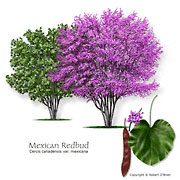

Eastern Redbud
(Cercis canadensis “Oklahoma”)
-Small sized deciduous tree
-Redbud will reach a height of 15′
-The canopy spread is 15′
-Showy lavender flowers in the Spring
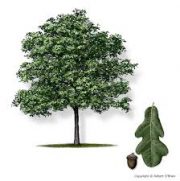

-Medium sized deciduous tree
-Lacey Oaks will reach a mature height of 30′
-The canopy spread is 30′
-Resistant to Oak Wilt
-Acorns
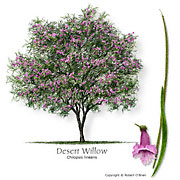

Desert Willow
(Chilopsis linearis)
– Small sized deciduous tree
-Desert Willows will reach a mature height of 15’-25’
-The canopy spread is only 10’
-Showy pink flowers
-Very drought tolerant
-Fruit
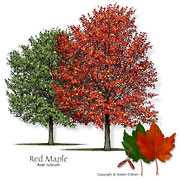

-Medium sized deciduous tree
-Red Maple will reach a height of 40′
-The canopy spread is 40′
-Yellow to red Fall color
